Gastroenterology – Ginecology – Urology strain | Antipathogenic activity – Vaginal candidiasis
Characteristics
FUNCTIONALITY
Inhibition of Enterococcus faecalis, Enterococcus faecium and Neisseria gonorrhoeae • Vaginal health • Prevention of urogenital infections • Inhibition of Candida
Scientific support
In vitro studies
1) Ocana V. et al. Characterization of a bacteriocin like substance produced by a vaginal Lactobacillus salivarius strain. Applied and Environmental Microbiology, 1999; 65(12):5631-5635.
2) Ocana V. et al. Surface characteristics of lactobacilli isolated from human vagina. J. Gen. Appl. Microbiol., 1999; 45:203-212.
3) Tomas MSJ. et al. Influence of pH, temperature and culture media on the growth and bacteriocin production by vaginal Lactobacillus salivarius CRL 1328. Journal of Applied Microbiology, 2002; 93: 714-724.
4) Gillor O. et al. The dual role of bacteriocins as anti- and probiotics. Appl Microbiol Biotechnol. 2008 December; 81(4): 591–606. doi: 10.1007/ s00253-008-1726-5.
5) Dover S.E. et al. Natural antimicrobials and their role in vaginal health: a short review. Int J Probiotics Prebiotics. 2008 ; 3(4): 219–230.
6) Juárez Tomás M.S. et al. Viability of vaginal probiotic lactobacilli during refrigerated and frozen storage. Anaerobe, Vol 10, Issue 1, February 2004, 1-5.
7) Zàrate G. and Nader-Macias ME. Influence of probiotic vaginal lactobacilli on in vitro adhesion of urogenital pathogens to vaginal epithelial cells. Letters in Applied Microbiology ISSN 0266-8254.
8) Ocana V and Nader-Macias ME. Adhesion of Lactobacillus Vaginal Strains with Probiotic Properties to Vaginal Epithelial Cells, 2011, Biocell 25(3):265-273.
9) Ocana V and Nader-Macias ME. Vaginal Lactobacilli: self and coaggregating ability, British Journal of Biomedical Science 2002, 59(4).
10) Tomas MSJ et al. Characterization of potentially probiotic vaginal lactobacilli isolated from Argentinean women. British Journal of Biomedical Science 2005 62(4).



